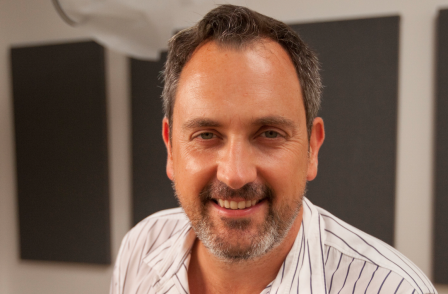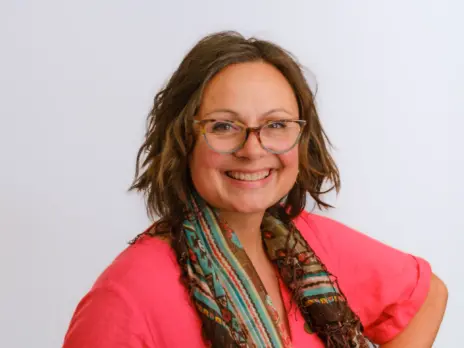
Former Daily Mirror photographer James Vellacott reveals how he swapped redundancy-threatened life on the national press for a new career heading up his own successful video production company.
I worked for the Daily Mirror for 18 years, 15 of them as a staff press photographer. It was a life full of experiences, some amazing, some harrowing but I was privileged to travel the world covering news features, celebrities, disasters and wars on behalf of the Mirror.
The art of press photography is much like running a business, but on a story-by-story basis. As an individual, you’re faced with a challenge and are starting to think from the moment the story is assigned to you by the paper. You have a specific goal, you have to decide what’s attainable and realistic, you then cover those bases whilst looking for opportunities on the way.
The final challenge is to deliver those results to deadline ahead of the opposition. These are also the fundamentals of running a business. I always perceived an evolving news story as a personal challenge, no matter what the subject either joyful or harrowing, there was an adrenaline buzz that fired through my veins making me move faster and think more quickly.
In 2008 I went to the Mirror with the concept of shooting video for the website alongside my photography. After a short presentation I was offered a video camera and sent off to start shooting. On stories, I prioritised stills and then, if there was time, I would shoot video.
I taught myself to edit and the edited videos were embraced by the Mirrors online department and used alongside the stories. This became part of my day-to-day work routine.
I was even sent out with the Mirror’s advertising department to try to sell in video directly to advertisers and found myself involved in pitches from time to time. However, there were fundamental issues with the extra work and costs associated. The first one was that shooting video and photography on assignment at the same time would always compromise one or the other. You may miss the important still image when shooting video and vice versa.
The second and most important issue was that we couldn’t find any way of generating direct revenue from these videos. The advertisers were impressed but not enough to put their hands in their pockets to sponsor any video shoots. The words of the Mirror’s managing editor still ring true today “…the newspaper is the cash cow. James. We can’t make video pay”. He still however understood the need for video in the digital revolution and I was to be used to train up the other staff photographers in the use of the moving image.
With my newspaper video ambitions cut short, and the ongoing threat of redundancy for myself and the other 10 staff photographers, I set up a tiny production company with my wife Michelle in the spare room of our flat. We called the production company Cherryduck as it was easy to say, had a fun feel about it and the dot com URL was available.
We started offering and shooting behind the scenes videos at fashion industry photo shoots. We were a great team and Michelle’s addictive personality in any networking scenario bought in shoots for clients like Next and Freemans.
With commercial video in demand and internet speeds going up rapidly I left the Mirror in 2009 to pursue Cherryduck full-time. We set up a website and worked out of our flat in Wapping. We were soon being asked to shoot catwalk videos for ‘click to buy’ websites. We were also covering commercial fashion events, and had started to shoot ‘how to’ videos with fashionistas illustrating how to dress à la mode and apply makeup.
The commercial world was embracing video and they knew it could significantly extend the reach of their online audience. Looking for a fashion industry related space, we took over a small photographic studio in Wapping in 2010 and took on extra staff to help cater for the growing client base.
Our clients demanded an increasingly high production feel to the videos and the cost of shoot locations, cameras, film lighting and prop hire were outstripping their budgets. The solution was to go in-house – rather than taking the standard route of hiring in all assets at a premium for a shoot day, we would look to buy, bit by bit, everything we needed to offer a comprehensive service.
In 2012 we purchased a 6,000 sq ft high ceilinged office below our studios and launched Tower Bridge Studios. Over the next three years we purchased new high-end film lighting, cameras and lenses. We also set up a prop hire and set building department in the cavernous basement below the new studios.
Many of our clients have been diverting marketing budget from TV advertising to online and rather than spending e.g. £60k on production for a single TV ad running for six months they now invest the same amount on 12 online videos at £5k per video. We shoot and they publish these videos every fortnight. As the new media mantra says ‘content is king’.
The trick is to keep the high production feel of a TV ad but with all attributed video production assets kept in house this allows us to provide a scalable and sustainable service to clients married with the super nimble reaction times I’m familiar with from my newspaper days. Brands recognise this is a news and trend driven world.
Sometimes I miss my previous life as a press photographer, but suffice to say that it was a different era and the experience allowed me to develop the skills needed to start and run a creative business effectively. The newspaper industry equips you with many skills required to achieve success in your own media enterprise. The trick is to apply these same skills to new challenges and trust your instincts.
Do’s and don’ts in moving from the newsroom to setting up your own creative media enterprise:
- Trust your instincts.
- Build your business slowly, the strongest businesses grow organically.
- Take business advice from a business mentor or undertake a basic business course
- Learn to listen carefully when meeting clients.
- Treat staff as team members, creativity is strongest when nurtured and gently encouraged rather than employing the sometimes brutal tactics of the newsroom.
- It’s very important to network where possible with prospective clients but don’t force an agenda.
James Vellacott is managing director Cherryduck Productions and Tower Bridge Studios.
Email pged@pressgazette.co.uk to point out mistakes, provide story tips or send in a letter for publication on our "Letters Page" blog







